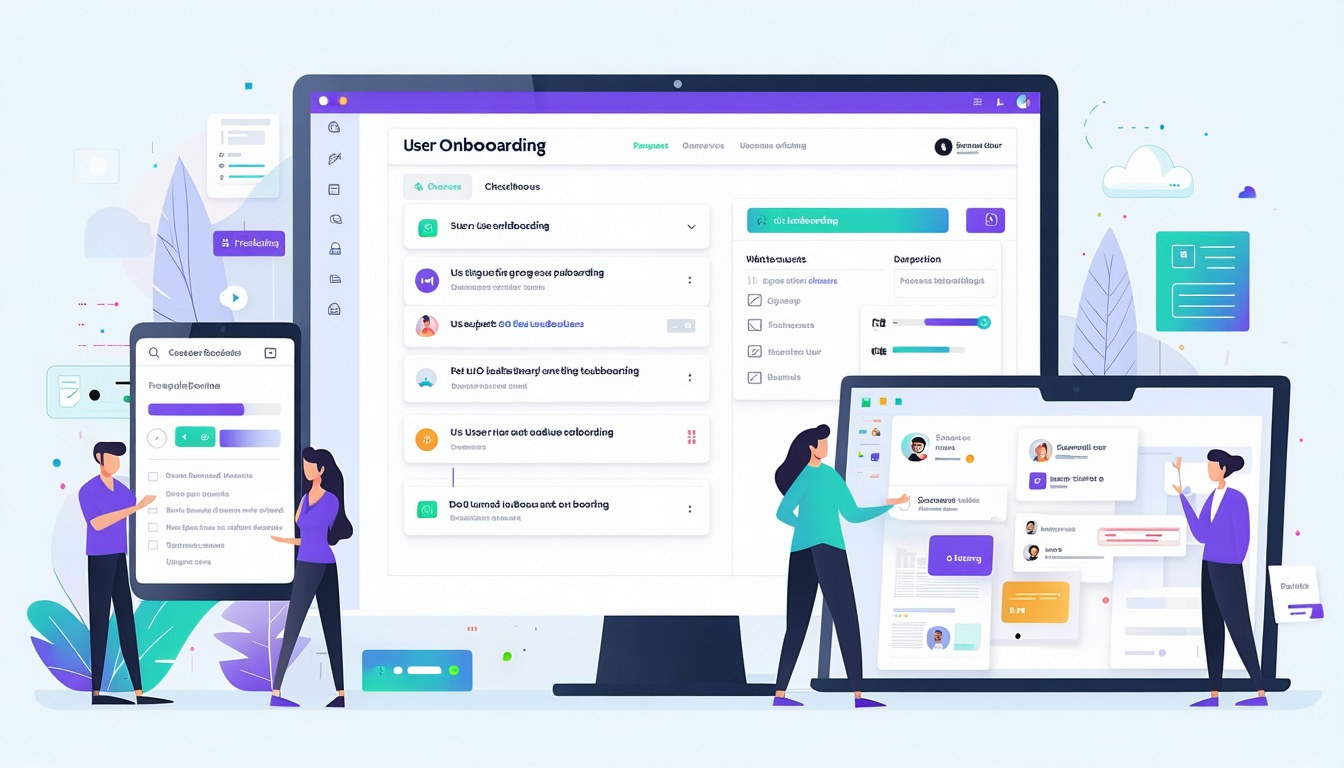Evolving Landscape of SEO and Web Development
In the dynamic realm of SEO and web development, the integration between the two plays a pivotal role in enhancing online visibility and user experience. Let’s delve into the significance of web development in SEO and the emerging trends that are steering innovations in this synergy.
Importance of Web Development in SEO
Web development forms the backbone of a website’s functionality and performance, and its alignment with SEO principles is essential for maximizing online presence. A well-structured and optimized website not only attracts search engine crawlers but also ensures a seamless user experience, ultimately contributing to higher search rankings.
Key aspects of web development that impact SEO include mobile responsiveness, site speed optimization, structured data markup, and accessibility features. By prioritizing these elements during the development phase, businesses can create a solid foundation for their SEO strategies, leading to improved organic visibility and user engagement.
Trends Driving Innovations
The ever-evolving digital landscape constantly introduces new trends and technologies that shape the way websites are developed and optimized for SEO. Keeping abreast of these trends is crucial for staying competitive in the online domain and meeting the evolving needs of users and search engines alike.
Two prominent trends driving innovations in web development for SEO are the rise of voice search optimization and the integration of artificial intelligence (AI) in the development process. Voice search is revolutionizing the way users interact with search engines, emphasizing the importance of structuring content for natural language queries and conversational interfaces.
On the other hand, the incorporation of AI in web development offers capabilities such as personalized user experiences, content optimization, and predictive analytics, empowering businesses to create dynamic and data-driven websites that cater to the individual preferences of users.
By embracing these trends and leveraging the symbiotic relationship between SEO and web development, businesses can position themselves for success in an increasingly competitive digital landscape. Stay tuned for more insights on the intersection of technology, creativity, and strategy in driving online visibility and engagement.
Mobile-First Approach
In the realm of web development, adopting a mobile-first strategy has become imperative for businesses aiming to enhance their online presence and optimize for search engines. Two critical components of this approach are responsive design and mobile page speed optimization.
Responsive Design
Responsive design is a fundamental aspect of creating a mobile-friendly website that adapts to various screen sizes and devices seamlessly. By using CSS media queries, developers can ensure that the layout, images, and content on the website adjust dynamically to provide an optimal user experience across smartphones, tablets, and desktops.
Implementing responsive design not only improves user engagement but also plays a significant role in SEO performance. Search engines like Google prioritize mobile-friendly websites in their rankings, making responsive design a key factor in enhancing visibility and user satisfaction.
Mobile Page Speed Optimization
When it comes to mobile SEO, page speed is a critical factor that can impact both user experience and search rankings. Mobile users expect fast-loading websites, and search engines take into account page speed when determining search results.
Optimizing for mobile page speed involves various techniques, including minimizing HTTP requests, leveraging browser caching, compressing images, and reducing server response time. By improving the loading time of mobile web pages, businesses can reduce bounce rates, increase user engagement, and boost their SEO performance.
In a competitive digital landscape, prioritizing a mobile-first approach through responsive design and mobile page speed optimization is essential for businesses looking to stay ahead in the online sphere. By catering to the increasing number of mobile users and providing a seamless browsing experience, companies can strengthen their web presence and improve their visibility in search engine results.
Technical SEO Enhancements
In the realm of web development, technical SEO enhancements play a pivotal role in optimizing websites for search engines. Two key aspects of technical SEO that significantly impact a site’s search visibility are structured data markup and JavaScript SEO.
Structured Data Markup
Structured data markup, also known as schema markup, is a structured format that provides search engines with detailed information about the content on a webpage. By utilizing standardized vocabulary within the code, web developers can help search engines understand the context of the content more effectively.
One of the primary benefits of structured data markup is the generation of rich snippets in search engine results pages (SERPs). Rich snippets enhance the visibility of a website by displaying additional information such as ratings, prices, and event details directly in the search results. This not only attracts more clicks but also enhances the user experience by providing relevant information upfront.
Implementing structured data markup requires careful consideration of the schema types that align with the content of the website. Common schema types include organization, product, article, and local business, among others. By incorporating structured data markup, businesses can enhance their website’s appearance in search results and improve the overall SEO performance.
JavaScript SEO
JavaScript SEO focuses on optimizing websites that heavily rely on JavaScript for rendering content. As search engine crawlers interpret JavaScript differently than traditional HTML, developers need to ensure that search engines can efficiently crawl and index JavaScript-rendered content.
One of the critical considerations in JavaScript SEO is implementing server-side rendering or pre-rendering techniques to provide search engines with a rendered version of the website that is easily crawlable. This approach ensures that search engines can access and index the content accurately, leading to improved visibility in search results.
Incorporating lazy loading for images and infinite scrolling on websites can enhance user experience while ensuring that search engines can efficiently crawl and index the entire website content. Additionally, optimizing JavaScript code for speed and performance can positively impact both user experience and search engine rankings.
By focusing on structured data markup and JavaScript SEO, businesses can elevate their web development practices to align with SEO best practices, ultimately improving their online visibility and driving organic traffic to their websites.
User Experience and SEO
When it comes to optimizing a website for search engines, user experience plays a critical role in determining its success. Focusing on elements that enhance user experience not only improves engagement but also positively impacts SEO. In this section, we will explore two key aspects: site speed and performance and accessibility in relation to SEO.
Site Speed and Performance
Site speed and performance have a significant impact on both user experience and search engine rankings. A slow-loading website can lead to higher bounce rates, lower user engagement, and ultimately, reduced visibility in search results. It is crucial for websites to load quickly and efficiently across all devices to provide a seamless browsing experience.
A study by Google found that as page load time goes from one second to ten seconds, the probability of a mobile site visitor bouncing increases by 123%. Ensuring that your website loads swiftly not only keeps visitors engaged but also improves your site’s chances of ranking well in search engine results pages (SERPs).
One way to measure and improve site speed is by optimizing images, leveraging browser caching, and minimizing server response times. By implementing these techniques, you can enhance the overall performance of your website and provide visitors with a smooth and enjoyable browsing experience.
Accessibility and SEO
Accessibility is another crucial component of user experience that directly impacts SEO. Ensuring that your website is accessible to all users, including those with disabilities, not only broadens your audience reach but also signals to search engines that you prioritize inclusivity and user-friendly design.
Search engines like Google consider accessibility as a ranking factor, emphasizing the importance of creating a website that is easy to navigate for all users, regardless of their abilities. Implementing features such as alt text for images, descriptive link text, and keyboard navigability enhances the accessibility of your website and contributes to a positive user experience.
By prioritizing site speed and performance, as well as accessibility in your web development efforts, you can create a website that not only ranks well in search engines but also provides a seamless and inclusive experience for all visitors. Investing in these aspects of user experience can lead to improved SEO performance and increased engagement with your target audience.
Content Optimization Strategies
Enhancing your website’s content is instrumental in improving your search engine optimization (SEO) efforts. By focusing on creating content that is not only engaging but also optimized for search engines, you can boost your visibility and attract more organic traffic. This section will explore two key content optimization strategies: SEO-friendly content structure and image and video optimization.
SEO-Friendly Content Structure
Crafting content with a strategic structure can significantly impact your SEO performance. A well-organized content layout not only enhances readability for users but also helps search engines understand the relevance and hierarchy of information on your website.
One effective way to create an SEO-friendly content structure is by incorporating headings and subheadings (H1, H2, H3, etc.) to break down the text into digestible sections. This not only improves the user experience by making the content easier to scan but also allows search engines to identify and prioritize important keywords within your content.
Additionally, utilizing bullet points, numbered lists, and tables can further enhance the organization of your content. These elements not only improve readability but also provide a visually appealing format that encourages users to engage with your content.
Image and Video Optimization
Images and videos play a vital role in enhancing the overall user experience of your website. However, to ensure that these visual assets contribute to your SEO efforts, it’s essential to optimize them correctly.
When adding images to your website, remember to use descriptive filenames and alt text that include relevant keywords. This not only improves accessibility for visually impaired users but also provides search engines with valuable context about the content of the image.
Optimizing video content involves similar practices, such as incorporating relevant keywords in video titles, descriptions, and tags. Additionally, providing transcripts for videos can further enhance their visibility in search results, as search engines can crawl and index the textual content.
To display data or numerical information related to image and video optimization, here is a sample table:
| Optimization Aspect | Best Practices |
|---|---|
| Image Filenames | Use descriptive filenames with relevant keywords |
| Alt Text | Include concise and descriptive alt text for all images |
| Video Titles | Incorporate targeted keywords in video titles |
| Video Transcripts | Provide transcripts to improve accessibility and indexing |
By implementing these content optimization strategies, you can create a website that not only engages users but also ranks higher in search engine results. Remember to regularly update and refine your content based on SEO best practices to stay ahead in the ever-evolving digital landscape.
Emerging Technologies and SEO
Staying ahead in the realm of web development for SEO requires a deep dive into emerging technologies that are reshaping the digital landscape. Voice search optimization and the integration of AI in web development and SEO are two key areas that deserve attention for enhancing online visibility and user experience.
Voice Search Optimization
The rise of voice-enabled devices and virtual assistants has significantly impacted the way users interact with search engines. Optimizing websites for voice search involves adapting content to match natural language queries and conversational tones. Understanding user intent and providing concise, informative answers becomes crucial in capturing voice search traffic.
Voice search optimization also involves structuring content in a way that aligns with featured snippets, as these are often the source of voice search results. Leveraging schema markup for FAQ sections and structured data can improve the chances of your content being selected for voice search responses.
To delve deeper into voice search optimization strategies, explore our article on front end web development.
AI in Web Development and SEO
Artificial Intelligence (AI) is revolutionizing web development and SEO by enabling automation, personalization, and predictive analysis. AI-powered tools can analyze vast amounts of data to identify trends, predict user behavior, and optimize content for search engines. From chatbots that enhance user engagement to algorithms that refine search results, AI is reshaping the online experience.
In web development, AI plays a significant role in enhancing user experience through dynamic content generation and personalized recommendations. By leveraging machine learning algorithms, websites can deliver tailored content based on user preferences and behavior. This level of customization not only improves user satisfaction but also boosts SEO performance by increasing engagement and dwell time.
For a comprehensive understanding of integrating AI into web development and SEO practices, refer to our article on web development projects.
By embracing voice search optimization and harnessing the power of AI in web development, businesses can not only adapt to evolving search trends but also stay ahead of the competition in delivering exceptional user experiences that resonate with modern digital consumers.











